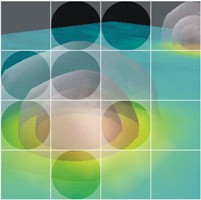|
EXPERIMENTAL PARTICLE PHYSICS - F9
Head of Department Secretary Experiment ATLAS at LHC studies processes occurring at collisions of protons with energy of 13 TeV and tests the predictions of the Standard Model like the existence of Higgs boson proven by the experiments at the LHC. Equally important are searches for processes which would points toward new physics, not described by the Standard Model. In the ATLAS experiment researchers from the department F9 are involved in maintenance and operations of detector system during data taking and in analysis of collected data. |
J. Stefan Institute, Jamova 39, 1000 Ljubljana, Slovenia, Telephone: +386 1 477 39 00 |

